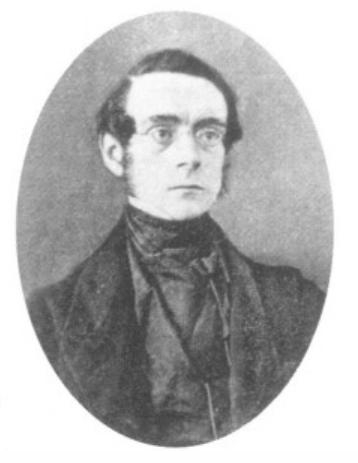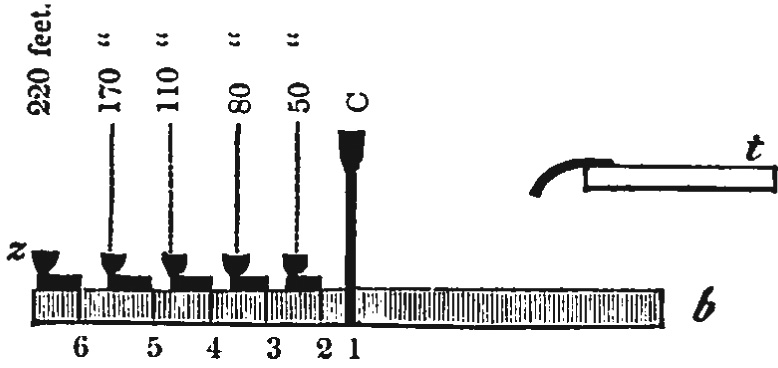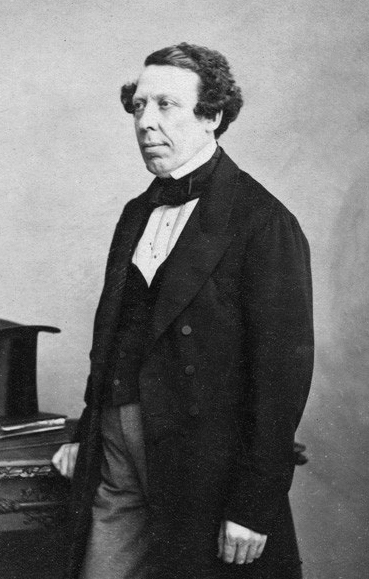|
Interrupter
An interrupter in electrical engineering is a device used to interrupt the flow of a steady direct current for the purpose of converting a steady current into a changing one. Frequently, the interrupter is used in conjunction with an inductor (coil of wire) to produce increased voltages either by a back emf effect or through transformer action. The largest industrial use of the interrupter was in the induction coil, the first transformer, which was used to produce high voltage pulses in scientific experiments and to power arc lamps, spark gap radio transmitters, and the first X-ray tubes, around the turn of the 20th century. Its largest use was the contact breaker or "points" in the distributor of the ignition system of gasoline engines, which served to periodically interrupt the current to the ignition coil producing high voltage pulses which create sparks in the spark plugs. It is still used in this application. Medical use Bird's interrupter The physician Golding Bird desi ... [...More Info...] [...Related Items...] OR: [Wikipedia] [Google] [Baidu] |
Induction Coil
An induction coil or "spark coil" (archaically known as an inductorium or Ruhmkorff coil after Heinrich Rühmkorff) is a type of electrical transformer used to produce high-voltage pulses from a low-voltage direct current (DC) supply. p.98 To create the flux changes necessary to induce voltage in the secondary coil, the direct current in the primary coil is repeatedly interrupted by a vibrating mechanical contact called an interrupter. Invented in 1836 by Nicholas Callan, with additional research by Charles Grafton Page and others, the induction coil was the first type of transformer. It was widely used in x-ray machines, spark-gap radio transmitters, arc lighting and quack medical electrotherapy devices from the 1880s to the 1920s. Today its only common use is as the ignition coils in internal combustion engines and in physics education to demonstrate induction. Construction and function An induction coil consists of two coils of insulated wire wound around a common i ... [...More Info...] [...Related Items...] OR: [Wikipedia] [Google] [Baidu] |
Pulvermacher Chain
The Pulvermacher chain, or in full as it was sold the Pulvermacher hydro-electric chain, was a type of voltaic battery sold in the second half of the 19th century for medical applications. Its chief market was amongst the numerous quack practitioners who were taking advantage of the popularity of the relatively new treatment of electrotherapy, or "electrification" as it was then known. Its unique selling point was its construction of numerous linked cells, rendering it mechanically flexible. A variant intended to be worn wrapped on parts of the body for long periods was known as Pulvermacher's galvanic chain or electric belt. The Pulvermacher Company attracted a great deal of antagonism from the medical community due to their use of the names of well-known physicians in their advertising without permission. The nature of their business; in selling to charlatans and promoting quack practices also made them unpopular with the medical community. Despite this, the Pulvermacher ... [...More Info...] [...Related Items...] OR: [Wikipedia] [Google] [Baidu] |
Golding Bird
Golding Bird (9 December 1814 – 27 October 1854) was a British medical doctor and a Fellow of the Royal College of Physicians. He became a great authority on kidney diseases and published a comprehensive paper on urinary deposits in 1844. He was also notable for his work in related sciences, especially the medical uses of electricity and electrochemistry. From 1836, he lectured at Guy's Hospital, a well-known teaching hospital in London and now part of King's College London, and published a popular textbook on science for medical students called ''Elements of Natural Philosophy''. Having developed an interest in chemistry while still a child, largely through self-study, Bird was far enough advanced to deliver lectures to his fellow pupils at school. He later applied this knowledge to medicine and did much research on the chemistry of urine and of kidney stones. In 1842, he was the first to describe oxaluria, a condition which leads to the formation of a particul ... [...More Info...] [...Related Items...] OR: [Wikipedia] [Google] [Baidu] |
Charles Grafton Page
Charles Grafton Page (January 25, 1812 May 5, 1868) was an American scientist who developed several electrical devices for which he obtained United States patents. He was also a physician, patent examiner, and college professor of chemistry. Like contemporaries Joseph Henry and Michael Faraday, Page began his career as a naturally curious investigator who conducted original research through direct observation and experimentation. Through his experimentation, Page helped develop a scientific understanding of the principles of electromagnetism. Page served as a patent examiner at the United States Patent Office, where his knowledge of electromagnetism was useful in the innovation process and in his own desire to develop electromagnetic locomotion. His work had a lasting impact on telegraphy and in the practice and politics of patenting scientific innovation. Page's views of patenting innovations challenged a commonly held belief at the time that maintained that scientists do not p ... [...More Info...] [...Related Items...] OR: [Wikipedia] [Google] [Baidu] |
Spark Gap Transmitter
A spark-gap transmitter is an obsolete type of radio transmitter which generates radio waves by means of an electric spark."Radio Transmitters, Early" in Spark-gap transmitters were the first type of radio transmitter, and were the main type used during the wireless telegraphy or "spark" era, the first three decades of radio, from 1887 to the end of World War I. German physicist Heinrich Hertz built the first experimental spark-gap transmitters in 1887, with which he proved the existence of radio waves and studied their properties. A fundamental limitation of spark-gap transmitters is that they generate a series of brief transient pulses of radio waves called damped waves; they are unable to produce the continuous waves used to carry audio (sound) in modern AM or FM radio transmission. So spark-gap transmitters could not transmit audio, and instead transmitted information by radiotelegraphy; the operator switched the transmitter on and off with a telegraph key, creating pulses ... [...More Info...] [...Related Items...] OR: [Wikipedia] [Google] [Baidu] |
Henry Letheby
Henry Letheby (1816 – 28 March 1876) was an English analytical chemist and public health officer. Early life Letheby was born at Plymouth, England, in 1816, and studied chemistry at the Royal Cornwall Polytechnic Society. In 1837 he commenced the study of medicine and became the assistant of Jonathan Pereira. He graduated M.B. at the University of London in 1842, and was also LSA (Licentiate of the Society of Apothecaries) (1837) and PhD. Career He was a lecturer on chemistry at the London Hospital. For some years Letheby was also medical officer of health and analyst of foods for the City of London. He was also appointed chief examiner of gas for the metropolis under the Board of Trade. Letheby was an extremely accurate technological chemist and contributed many papers to ''The Lancet'' and other scientific periodicals. He was a fellow of the Linnean Society and the Chemical Society. Letheby's chief work was the treatise On Food, Its Varieties, Chemical Composition, Nutriit ... [...More Info...] [...Related Items...] OR: [Wikipedia] [Google] [Baidu] |
Transformer
A transformer is a passive component that transfers electrical energy from one electrical circuit to another circuit, or multiple circuits. A varying current in any coil of the transformer produces a varying magnetic flux in the transformer's core, which induces a varying electromotive force (EMF) across any other coils wound around the same core. Electrical energy can be transferred between separate coils without a metallic (conductive) connection between the two circuits. Faraday's law of induction, discovered in 1831, describes the induced voltage effect in any coil due to a changing magnetic flux encircled by the coil. Transformers are used to change AC voltage levels, such transformers being termed step-up or step-down type to increase or decrease voltage level, respectively. Transformers can also be used to provide galvanic isolation between circuits as well as to couple stages of signal-processing circuits. Since the invention of the first constant-potential transfo ... [...More Info...] [...Related Items...] OR: [Wikipedia] [Google] [Baidu] |
Golding Bird's Interrupter
Golding is an English surname. People People with the surname include: * Andrew Golding (born 1963), English cricketer * Arthur Golding (c. 1536 – 1606), English translator * Ashton Golding (born 1996), Jamaican rugby league footballer * Belle Golding (1864–1940), Australian feminist activist * Benjamin Golding (1793–1863), British doctor * Bill Golding (1916–1999), Australian rules footballer * Binker Golding (born 1985), British jazz musician * Bob Golding (born 1970), English actor * Bruce Golding (born 1947), Jamaican politician * Frank Golding (1890–1966), Australian rules footballer * George Golding (1906–1999), Australian runner * Germaine Golding (born 1887), French tennis player * Grant Golding (born 1981), Canadian gymnast * Henry Golding (died 1576), British Member of Parliament * Henry Golding (died 1593), British Member of Parliament * Henry Golding (actor) (born 1987), British–Malaysian actor * James Golding (cricketer) (born 1977), English c ... [...More Info...] [...Related Items...] OR: [Wikipedia] [Google] [Baidu] |
Daniel Davis Jr
Daniel is a masculine given name and a surname of Hebrew origin. It means "God is my judge"Hanks, Hardcastle and Hodges, ''Oxford Dictionary of First Names'', Oxford University Press, 2nd edition, , p. 68. (cf. Gabriel—"God is my strength"), and derives from two early biblical figures, primary among them Daniel from the Book of Daniel. It is a common given name for males, and is also used as a surname. It is also the basis for various derived given names and surnames. Background The name evolved into over 100 different spellings in countries around the world. Nicknames (Dan, Danny) are common in both English and Hebrew; "Dan" may also be a complete given name rather than a nickname. The name "Daniil" (Даниил) is common in Russia. Feminine versions (Danielle, Danièle, Daniela, Daniella, Dani, Danitza) are prevalent as well. It has been particularly well-used in Ireland. The Dutch names "Daan" and "Daniël" are also variations of Daniel. A related surname developed ... [...More Info...] [...Related Items...] OR: [Wikipedia] [Google] [Baidu] |
Reed Switch
Reed or Reeds may refer to: Science, technology, biology, and medicine * Reed bird (other) * Reed pen, writing implement in use since ancient times * Reed (plant), one of several tall, grass-like wetland plants of the order Poales * Reed reaction, in chemistry * Reed receiver, an outdated form of multi-channel signal decoding * Reed relay, one or more reed switches controlled by an electromagnet * Reed switch, an electrical switch operated by an applied magnetic field * Reed valve, restricts the flow of fluids to a single direction * Reed (weaving), a comb like tool for beating the weft when weaving * Reed's law, describes the utility of large networks, particularly social networks * Reed–Solomon error correction, a systematic way of building codes that can be used to detect and correct multiple random symbol errors * Reed–Sternberg cell, related to Hodgkin's disease Organizations * Reed (company), offering employment-related services (UK) * Reed and Stem, former ... [...More Info...] [...Related Items...] OR: [Wikipedia] [Google] [Baidu] |
Switch
In electrical engineering, a switch is an electrical component that can disconnect or connect the conducting path in an electrical circuit, interrupting the electric current or diverting it from one conductor to another. The most common type of switch is an electromechanical device consisting of one or more sets of movable electrical contacts connected to external circuits. When a pair of contacts is touching current can pass between them, while when the contacts are separated no current can flow. Switches are made in many different configurations; they may have multiple sets of contacts controlled by the same knob or actuator, and the contacts may operate simultaneously, sequentially, or alternately. A switch may be operated manually, for example, a light switch or a keyboard button, or may function as a sensing element to sense the position of a machine part, liquid level, pressure, or temperature, such as a thermostat. Many specialized forms exist, such as the toggle switch, ... [...More Info...] [...Related Items...] OR: [Wikipedia] [Google] [Baidu] |
Hertz
The hertz (symbol: Hz) is the unit of frequency in the International System of Units (SI), equivalent to one event (or cycle) per second. The hertz is an SI derived unit whose expression in terms of SI base units is s−1, meaning that one hertz is the reciprocal of one second. It is named after Heinrich Rudolf Hertz (1857–1894), the first person to provide conclusive proof of the existence of electromagnetic waves. Hertz are commonly expressed in multiples: kilohertz (kHz), megahertz (MHz), gigahertz (GHz), terahertz (THz). Some of the unit's most common uses are in the description of periodic waveforms and musical tones, particularly those used in radio- and audio-related applications. It is also used to describe the clock speeds at which computers and other electronics are driven. The units are sometimes also used as a representation of the energy of a photon, via the Planck relation ''E'' = ''hν'', where ''E'' is the photon's energy, ''ν'' is its freq ... [...More Info...] [...Related Items...] OR: [Wikipedia] [Google] [Baidu] |







